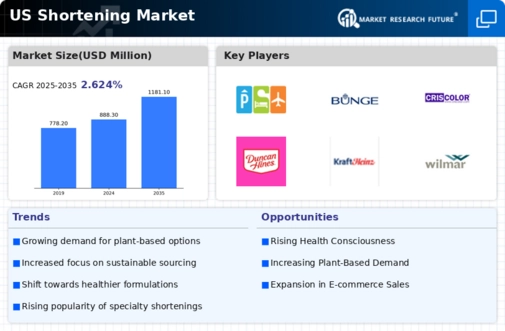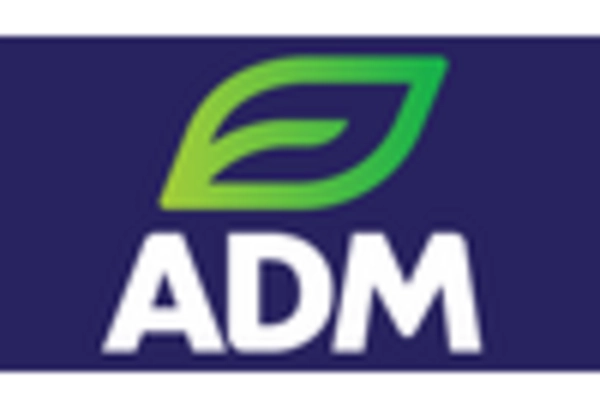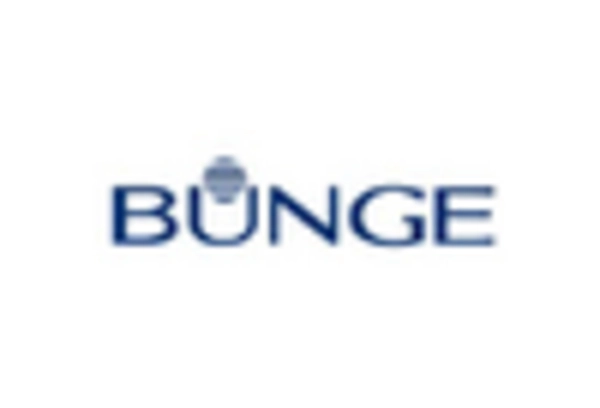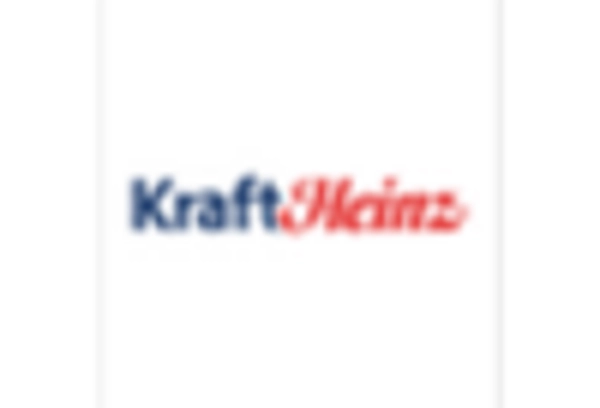Regulatory Changes and Compliance
Regulatory changes significantly impact the shortening market, as manufacturers must navigate evolving food safety and labeling requirements. Recent updates to regulations regarding trans fats and nutritional labeling have prompted companies to reformulate their products to comply with new standards. This compliance not only ensures consumer safety but also influences product development strategies within the industry. As regulations become more stringent, manufacturers are investing in research to create healthier shortening options that meet regulatory guidelines while still appealing to consumers. The ability to adapt to these regulatory changes is crucial for companies in the shortening market, as it can affect their market share and overall competitiveness.
Rising Demand for Plant-Based Products
The shortening market experiences a notable increase in demand for plant-based alternatives. As consumers become more health-conscious, they seek products that align with their dietary preferences. This shift is reflected in the market, where plant-based shortenings are projected to grow at a CAGR of 8% through 2025. The shortening market is adapting to this trend by introducing innovative formulations that cater to vegan and vegetarian diets. Additionally, the rise of flexitarian diets further fuels this demand, as consumers look for versatile options that can be used in various culinary applications. The industry is responding by investing in research and development to create high-quality plant-based shortenings that mimic the texture and functionality of traditional options.
Growing Bakery and Confectionery Sector
The bakery and confectionery sector significantly influences the shortening market, as these industries are major consumers of shortening products. The increasing popularity of baked goods, including artisanal bread, pastries, and cakes, drives demand for high-quality shortenings that enhance flavor and texture. Recent data indicates that the bakery segment accounts for over 50% of the total shortening market consumption. As consumer preferences shift towards premium and specialty baked goods, manufacturers are responding by developing shortenings tailored for specific applications, such as puff pastry or cake batters. This trend is expected to continue, with the bakery sector projected to grow at a steady rate, further bolstering the shortening market.
Increased Focus on Clean Label Products
The shortening market is witnessing a significant shift towards clean label products, driven by consumer preferences for transparency and simplicity in ingredient lists. As more consumers scrutinize food labels, manufacturers are reformulating their products to eliminate artificial additives and preservatives. This trend is particularly evident in the shortening market, where brands are emphasizing natural ingredients and minimal processing. According to recent surveys, approximately 70% of consumers express a preference for products with recognizable ingredients. This demand for clean label shortenings is prompting companies to innovate and develop products that meet these expectations, thereby enhancing their market position and appeal to health-conscious consumers.
Technological Advancements in Production
Technological advancements play a crucial role in shaping the shortening market. Innovations in production processes, such as enzymatic modifications and advanced emulsification techniques, enhance the quality and functionality of shortening products. These advancements allow manufacturers to create shortenings with improved texture, stability, and shelf life. Furthermore, the integration of automation and data analytics in production facilities streamlines operations, reducing costs and increasing efficiency. As a result, companies in the shortening market can respond more effectively to consumer demands and market trends. The ongoing investment in technology is likely to drive growth and competitiveness within the industry, enabling manufacturers to deliver high-quality products that meet evolving consumer preferences.

















Leave a Comment